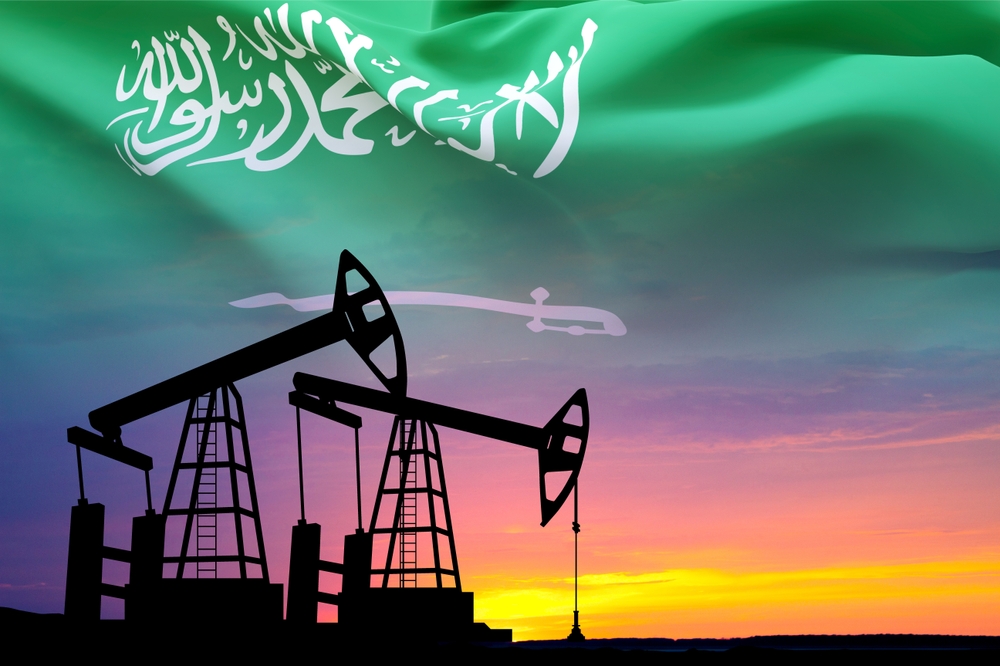Oil reserves are one of the most critical resources shaping global economies and energy markets. Countries with significant reserves hold a strategic position in the world, influencing energy policies and trade. These reserves, found in diverse regions, range from vast desert fields to offshore deposits. This article explores the nations with the largest proven oil reserves, highlighting their capacity, historical milestones, and the role oil plays in their economies. Each nation has a unique story behind its oil wealth, so here’s a closer look at these reserves and the impact they have on the world stage.
Qatar

Qatar’s proven oil reserves are estimated at approximately 25 billion barrels, making it one of the smaller reserve holders on this list. The majority of the reserves are concentrated in the Dukhan Field and offshore areas. Doha, the nation’s capital, is a hub for both its oil and natural gas industries. Qatar discovered oil in 1939 at Dukhan, setting the foundation for its economic prosperity. Although oil is a key export, the country is primarily known for its vast natural gas reserves, particularly its role in global LNG exports. It has strategically used its oil revenues to develop robust infrastructure and diversify its economy. With plans for sustainable energy investments, Qatar is positioning itself for a future less reliant on hydrocarbons.
Nigeria

Nigeria’s proven oil reserves are estimated at 37 billion barrels, concentrated mainly in the Niger Delta region. Abuja, the capital city, manages the nation’s oil policies, while Lagos serves as a commercial hub for the industry. Oil was first discovered in Oloibiri in 1956, which marked the start of the country’s oil journey. Crude oil is its primary export, accounting for over 80% of its revenue. It is also a leading exporter of liquefied natural gas (LNG), leveraging its vast associated gas reserves. Challenges such as pipeline vandalism and oil theft have impacted its output. However, reforms and investments are underway to improve the efficiency and security of its oil operations.
Libya

Libya holds approximately 48 billion barrels of proven oil reserves, predominantly located in the Sirte Basin. Tripoli, the capital city, serves as the center for the country’s oil production and exports. Oil was first discovered in Libya in 1959, leading to its emergence as a significant producer by the 1960s. Crude oil accounts for over 95% of the country’s total exports, making it the backbone of the nation’s economy. Despite its vast reserves, political instability and outdated infrastructure have limited production levels in recent years. Efforts are ongoing to stabilize the industry and attract foreign investment to modernize its facilities. It is also focusing on reviving its exploration efforts to uncover additional reserves.
United States

The United States holds approximately 68 billion barrels of proven oil reserves, primarily located in Texas, Alaska, and North Dakota. Washington, D.C., plays a crucial role in setting policies that govern the nation’s energy landscape. Oil was first commercially drilled in Pennsylvania in 1859, marking the start of the global oil industry. The country is not only a major producer but also the largest consumer of oil globally. Advances in hydraulic fracturing and horizontal drilling have significantly increased U.S. reserves in recent decades. Despite its domestic production, it remains a net importer of certain types of crude oil. Efforts to transition to renewable energy sources are gaining traction, although oil continues to play a vital role in its economy.
Kuwait

/ Wikimedia Commons
Kuwait holds around 101.5 billion barrels of proven oil reserves, ranking among the largest in the Middle East. Most of these reserves are located in the Burgan Field, one of the world’s largest oil fields. Kuwait City, the nation’s capital, is central to its oil-related activities and exports. The discovery of oil in the Burgan Field in 1938 marked the start of the country’s transformation into a wealthy nation. Oil exports account for nearly 90% of its revenue, underscoring its reliance on hydrocarbons. In recent years, it has invested in modernizing its refineries and expanding production capacity. Efforts to diversify its economy and reduce oil dependency are also gaining momentum.
United Arab Emirates (UAE)

The United Arab Emirates possesses approximately 107 billion barrels of proven oil reserves, primarily located in Abu Dhabi. Abu Dhabi, the capital city, is the hub for the nation’s oil production and exports. Oil was first discovered in the UAE in 1958 in the Bab Field, transforming the country’s economic landscape. The country is also a significant producer of natural gas and petrochemical products. It has invested heavily in renewable energy, with projects such as Masdar City showcasing its commitment to sustainability. The government has implemented strategies to diversify its economy and reduce its reliance on oil revenues. It continues to invest in advanced oil recovery techniques to maximize output from existing fields.
Russia

Russia’s proven oil reserves are estimated at approximately 108 billion barrels, spread across Siberia, the Ural region, and offshore locations. Moscow, the capital, oversees one of the most extensive energy sectors globally. Oil exploration in Russia began in the 19th century, with major developments taking place in the Soviet era. Crude oil and petroleum products account for a significant portion of the country’s export revenue. It is also a global leader in natural gas production, further enhancing its energy dominance. It is focusing on Arctic exploration to uncover additional reserves and extend its energy resources. Advanced extraction technologies are being deployed to improve efficiency in older fields.
Iran

Iran’s proven oil reserves are estimated at approximately 208 billion barrels, ranking third globally. The majority of these reserves are located in the southwestern Khuzestan province. Tehran, the capital city, is the center of the country’s political and economic activities. The first significant oil discovery was made in 1908 in Masjed Soleyman, setting the foundation for its oil industry. Besides oil, Iran exports natural gas, ranking as one of the largest reserves holders globally. Sanctions have impacted its oil exports, but the country continues to seek partnerships to boost production. Technological advancements and domestic expertise have been instrumental in maintaining its production levels.
Saudi Arabia

Saudi Arabia holds the second-largest oil reserves, estimated at around 267 billion barrels. These reserves are concentrated in the Eastern Province, with Riyadh as the nation’s capital. The discovery of oil in 1938 at the Dammam oil field transformed the country’s economy. Today, it is a leading exporter of petroleum and petrochemical products. The state-owned company, Saudi Aramco, is the world’s largest oil producer. The nation is investing in diversifying its economy through the Vision 2030 initiative, aiming to reduce dependence on oil revenues. Renewable energy projects are also being developed to meet future energy demands. Moreover, it is exploring hydrogen as an alternative energy source to maintain its global energy leadership.
Venezuela

Venezuela boasts the largest proven oil reserves globally, estimated at approximately 303 billion barrels. These reserves are primarily located in the Orinoco Belt, a vast region rich in extra-heavy crude oil. Caracas, the nation’s capital, serves as the administrative hub for the country’s oil industry. The first significant oil discovery in the country occurred in 1922 at the Maracaibo Basin, marking the beginning of its journey as a major oil producer. Beyond oil, it exports minerals such as iron ore and bauxite. Despite its abundant resources, the country faces economic challenges, including hyperinflation and political instability. Efforts are ongoing to attract foreign investment to revitalize its oil sector. It is also focusing on modernizing its extraction technologies to optimize production efficiency.
This article originally appeared on Rarest.org.
More from Rarest.org
20 Keystone Species That Play a Crucial Role in Their Habitats

Keystone species are essential to maintaining the balance of their ecosystems. Without them, the structure of the habitat could change dramatically. These species often influence many other organisms in their environment, helping to regulate populations and maintain biodiversity. Read More.
18 Rare and Exotic Fruits You Can Grow at Home

Growing your own exotic fruits at home is an exciting way to add rare flavors to your garden. Many of these fruits offer unique tastes that are hard to find in stores. Read More.
15 Endangered Species Residing in Hidden Corners of the Earth

In the far reaches of our planet, there are species so rare and elusive that they seem almost mythical. These creatures, often residing in the most remote and hidden corners of the Earth, are also some of the most endangered. Read More.
